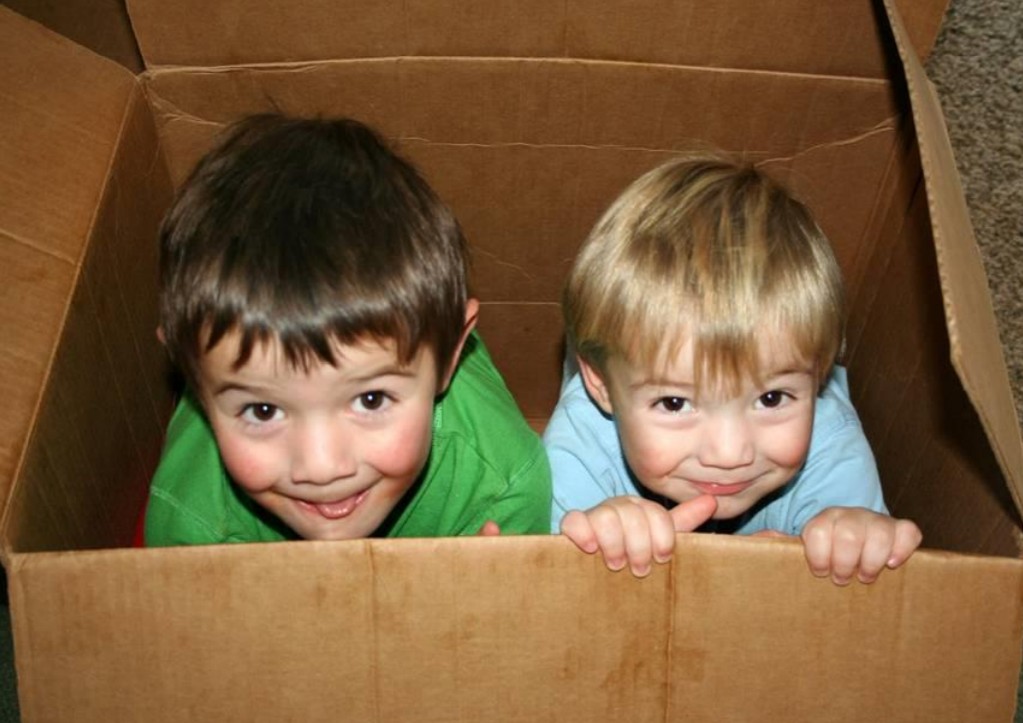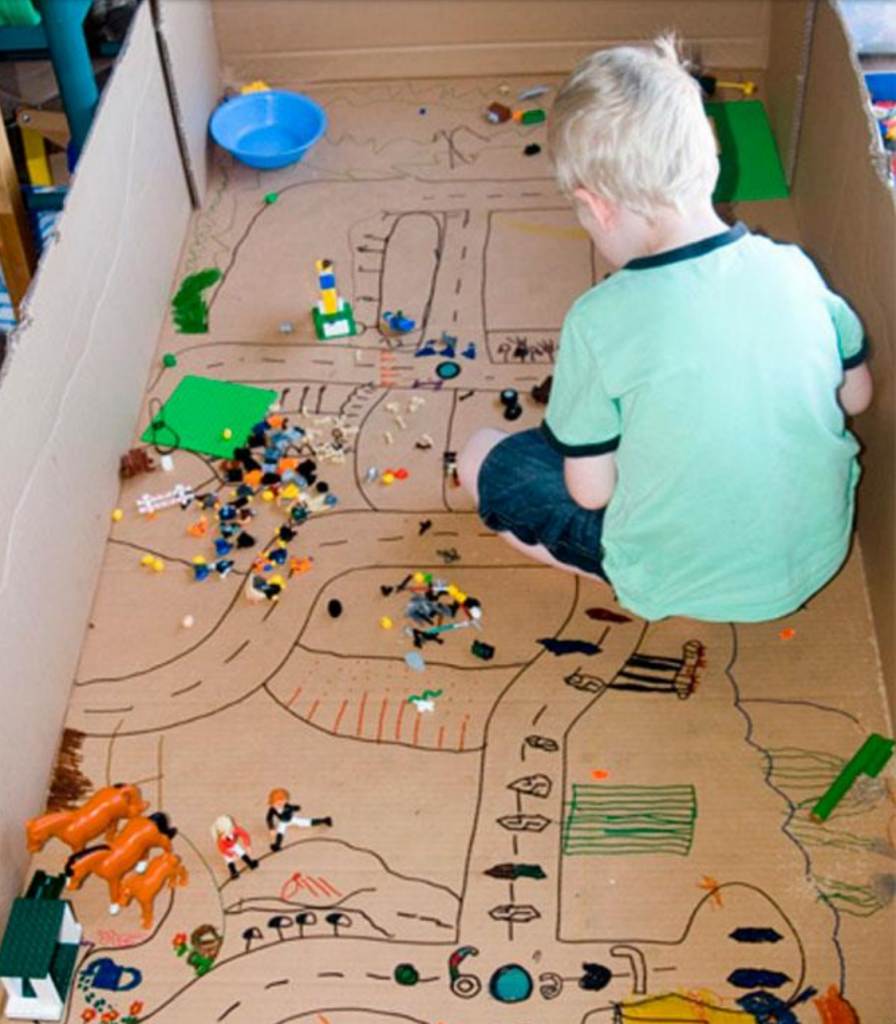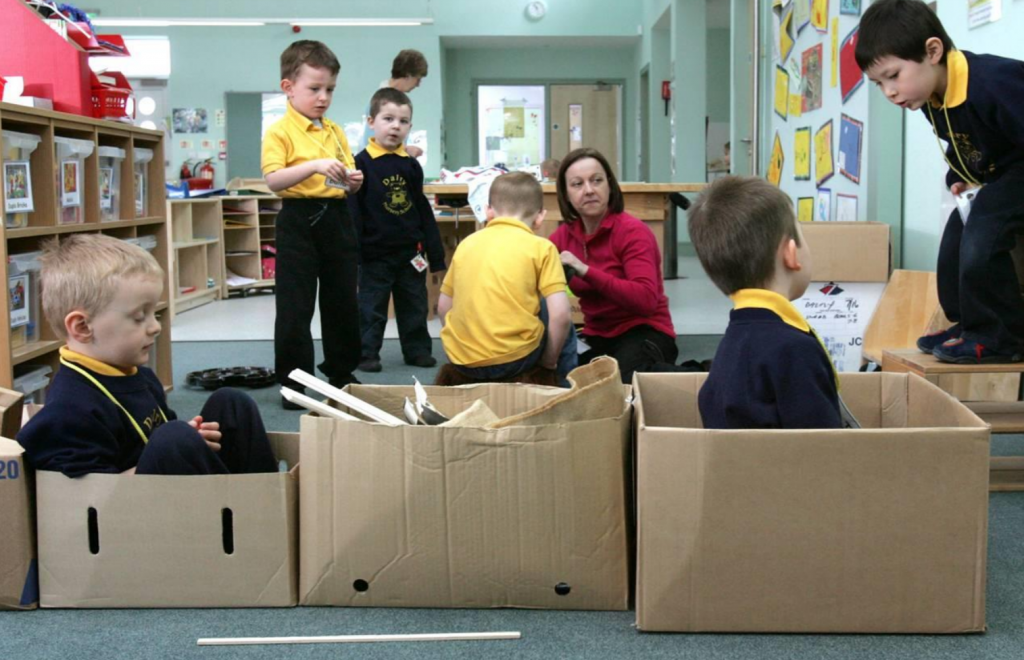Reflections on Play: Sensory Play and Cardboard Boxes


The humble cardboard box is a great example of an a-sensory environment. The brown colour suggests nothing in particular. The smooth sides infer little. The cube structure defines empty space. The subtle smell lacks distraction. The sound of the cardboard folding is muted and musicless.
This very lack of sensory inputs is an essential contrast to the more powerful and deliberate stimulation we traditionally think of when we talk about “sensory play.”
Spatial Awareness
Babies do it, toddlers do it and children do it too! The first thing they want to do when confronted with a cardboard box is try to get in it. As cute as this is, there’s actually a very important reason why they do this. It’s called Spatial Awareness:
In the early years, little ones spend a good deal of time getting to know their own bodies, and with that comes the necessary question, “How big am I?” And as they continue to grow, the answer to that question keeps changing.That’s why kids are constantly testing their own size by crawling in, through, around, over and under things. And cardboard boxes are often the perfect size for this kind of spatial exploration.
This need for “denning” continues throughout childhood because in many ways, it may be a subconscious return to the comfort of the womb.

Comfort and Security
There’s also an emotional component to seeking out small spaces. Right from the start, children are soothed by a sense of being bundled up or embraced in mommy’s arms.
Empowerment
Imagine what it’s like to always be the smallest person in a room. Everything is sized for big people. In small spaces, kids feel BIG.
Likewise, the lightweight construction of a cardboard box enables young children to move and manipulate an object that is bigger than they are. In other words, cardboard yields to their will.
Control
Cardboard boxes make ideal hiding places. And children love to hide. The hiding game may well be the first experience a child has with knowing something you don’t know.
This is such a powerful idea when we grow up, as adults we intuitively “get it.”

Imagination
“Imagination is the source of all human achievement”, Ken Robinson suggested. A box can become anything we want it to be if we allow ourselves to be open and free with our thinking and imaginings!
Here are a few activities you can do with cardboard boxes:
You could use the cardboard boxes for talking about positional language. The children can talk about themselves in relation to the boxes. They are inside, beside, hiding their hand under or placing a scarf over the box. They might wind some ribbon round the boxes or wear it on or on top of their head.

Use it to talk about how much can fit inside! Can they look at three different boxes of different sizes and estimate how many teddies, books or shoes or even friend could fit inside?
If you would like to read further, I would recommend the minimalist ‘Not A Box’ by Antoinette Portis! And don’t forget you can tag us in your cardboard box adventures on instagram @adventureswithalicesharp.